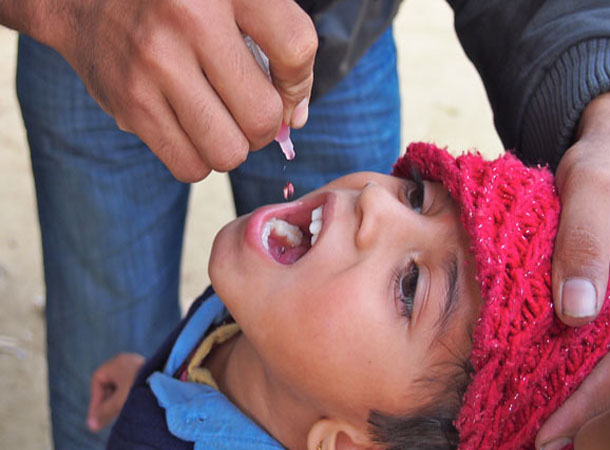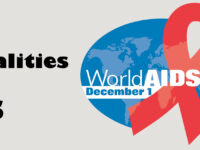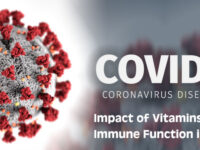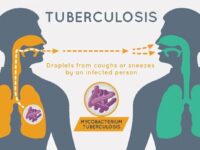What Is Polio?
This disease is known as polio. Polio is a contagious, virally induced disease that can cause paralysis and death. The more technical name for polio is poliomyelitis.
The reason it is called poliomyelitis is because the prefix polio means ‘grey’ in ancient Greek, myelo refers to the spinal cord, and itis refers to the inflammation of something. Therefore, when we combine all of these terms together we get the inflammation of the spinal cord’s grey matter, or poliomyelitis.
This disease typically affects children under five years of age and, in 1 of 200 infections, it will lead a person to develop irreversible paralysis. In 5%-10% of these cases, this irreversible paralysis may actually affect muscles involved in respiration, or breathing, leading to an individual’s death when they can no longer breathe.
Paralytic polio also may be classified as:
1. Spinal polio
Attacks motor neurons in the spinal cord and causes paralysis in arms and legs and breathing problems
2. Bulbar polio
Affects neurons responsible for sight, vision, taste, swallowing, and breathing
3. Bulbospinal polio
Many people with nonparalytic polio are able to make a full recovery, while those with paralytic polio generally end up with permanent paralysis.
Causes
Polio is caused by infection with the poliovirus. This virus is highly contagious, and is passed on through food and water contaminated with the stool (feces) of infected people. It can take 4 to 21 days before symptoms appear and an infected person can pass the virus on to other people even before symptoms appear.
Infection with polio happens when the virus enters the body through the mouth, multiplies in the throat and intestine, and spreads through the blood to the central nervous system. There, the virus attacks nerve cells, which can lead to paralysis.
Recognizing the Symptoms of Polio
Sub-clinical polio may not trigger noticeable symptoms. In fact it is estimated that 95 to 99 percent of infected patients are asymptomatic. In the five percent of polio cases in which patients do experience symptoms, they can range from mild to severe. Paralytic polio (polio that leads to paralysis) has more severe symptoms and can be fatal. Patients with non-paralytic polio experience mild, flu-like symptoms.
Sub-Clinical Polio
If patients do have symptoms, they usually last for 72 hours or less and may include:
1. Headache
2. Sore, red throat
3. Slight fever
4. Vomiting
5. General discomfort
Non-Paralytic Polio
The symptoms of non paralytic polio may last for a couple of days to a week or two and includes
1. Fever
2. Sore throat in the absence of upper respiratory infection
3. Headache
4. Vomiting
5. Fatigue
6. Abnormal reflexes
7. Problems swallowing and/or breathing
8. Back and neck pain and stiffness, particularly neck stiffness with forward flexion of the neck,
9. Arm and leg pain or stiffness
10. Muscle tenderness and spasms
Paralytic Polio
People with paralytic polio experience the symptoms associated with non-paralytic polio first. Soon after, the following symptoms appear:
1. loss of reflexes
2. severe spasms and muscle pain
3. loose and floppy limbs, sometimes on just one side of the body, this is due to the weakness which results from the involvement of the spine
4. sudden paralysis (temporary or permanent)
5. deformed limbs (especially the hips, ankles, and feet due to prolonged weakenss and the lack of appropriate orthopedic bracing
Prevention
Although improved public sanitation and careful personal hygiene may help reduce the spread of polio, the most effective way to prevent the disease is with polio vaccine.
Polio vaccine
Currently, most children in the United States receive four doses of inactivated poliovirus vaccine (IPV) at the following ages:
- Two months
- Four months
- Between 6 and 18 months
- Between ages 4 and 6 when children are just entering school
Sources:
http://www.healthline.com/health/poliomyelitis#Symptoms4
http://www.mayoclinic.org/diseases-conditions/polio/basics/prevention/con-20030957
http://chealth.canoe.com/Condition/GetCondition/Polio
http://www.medicalnewstoday.com/articles/155580.php
http://study.com/academy/lesson/polio-causes-symptoms-and-treatments.html
http://www.cdc.gov














